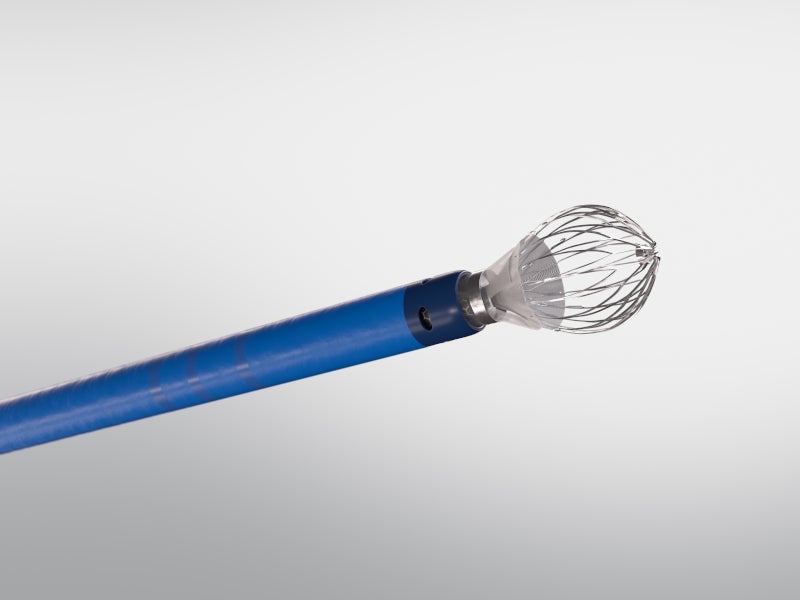
Complete LAA closure was assessed by TEE and LAA-angiography after closure. The device size is typically chosen 10–20% larger than the diameter of the ostium/landing zone and the device was deployed under fluoroscopy and TEE guidance. Measurements were done in angiography in right anterior oblique (RAO) caudal and cranial projections and in TEE in 0°, 45°, 90° and 135°. Optimal device type and size was determined after echocardiographic and angiographic visualization and determination of the shape, number of lobes and diameter of ostium (Watchman), landing zone (Amulet) and depth of the LAA. A pigtail catheter was positioned into the LAA over a soft J-tipped 0.035-inch wire for angiography and for advancing the sheath into the LAA. The device-suitable sheath was inserted into the left atrium over a wire. Reconduction of the pulmonary veins was assessed using a decapolar circular mapping catheter (Lasso, Biosense Webster) before deploying the LAAC device. In patients with prior pulmonary vein isolation procedure with or without LAA electrical isolation, angiography of the pulmonary veins was performed.

Implantation of LAAC device is done for all cases under fluoroscopy and TEE guidance. Electrophysiologist performed the transseptal puncture mainly fluoroscopic guided while interventional cardiologists TEE-guided. Transseptal puncture was performed under fluoroscopic and/or TEE guidance using an SL1 sheath.

Operators were either electrophysiologists or interventional cardiologists, depending on the indication for LAAC. Intravenous heparin was administered to maintain an activated clotting time of >300 s throughout the procedure.

All procedures were performed under deep sedation using midazolam, fentanyl and continuous infusion of propofol. No assessment of LAA anatomy was done using CT. Aim of this study was therefore to compare the Watchman™ to the Amulet™ LAAC device regarding peri-procedural success and complications during long-term follow-up in a real-world industry-independent registry.Īll patients underwent preprocedural transthoracic and transesophageal echocardiography (TEE) to measure left ventricular ejection fraction and to rule out left atrial thrombi. Otherwise, data reporting a head-to-head comparison of clinical outcomes in a consecutive, industry-independent registry of Amplatzer and Watchman devices are limited, ,,.
#Watchman anti stroke device trial
A recently published, industry-initiated (Abbott), large, randomized, multi-center, trial (Amulet IDE trial) evaluating the safety and effectiveness of the Amulet occluder compared with the Watchman™ device, has shown that the Amulet occluder was non-inferior for safety and effectiveness of stroke prevention compared with the Watchman device. For ACP and its second-generation Amulet, multiple retrospective and prospective registries have reported successful device implantation in 95–100% of patients, with a low rate of major periprocedural adverse events, ,,. The Watchman device is approved in many countries worldwide and is the only device studied in randomized trials, , as well as in multicenter prospective non-randomized studies. The Watchman (Boston Scientific, Marlborough, MA, USA) and the Amplatzer Cardiac Plug (ACP) (Abbott, St Paul, MN, USA) are the most commonly used devices for mechanical orifice obstruction and the Lariat device (SentreHEART, Redwood City, CA, USA) for epicardial suture ligation. Taking into consideration that 90% of thrombi are located in the left atrial appendage (LAA) in patients with non-valvular AF, left atrial appendage closure (LAAC) has emerged as an alternative approach in this patient group.Ĭurrently, many percutaneous LAAC devices have obtained CE mark. Although oral anticoagulants (OAC) play an important role in preventing AF-related stroke, , this treatment is underutilized in a subset of patients due to poor patient compliance, contraindications, and potential bleeding complications, ,. Patients with AF have an increased risk of ischemic stroke approximately 5 times compared with those without AF. Atrial fibrillation (AF) is the most common form of clinically relevant arrhythmia with a prevalence ranging from 0.1% among patients aged <55 years and up to 9% in octogenarians.


 0 kommentar(er)
0 kommentar(er)
